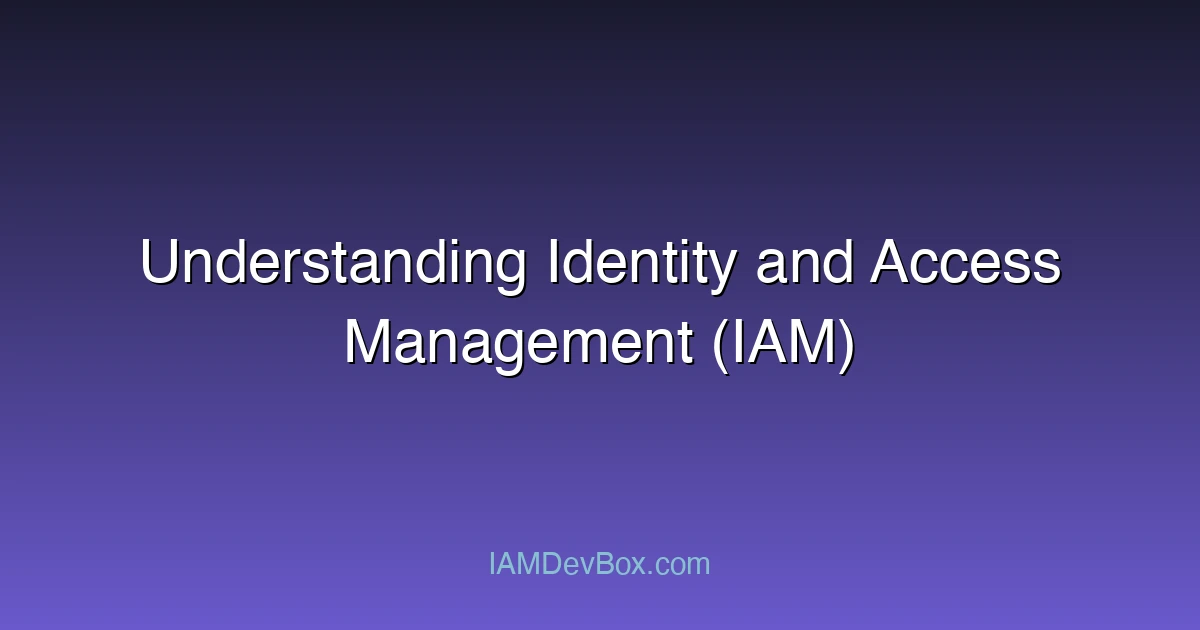Visual Overview:
graph TB
subgraph "Zero Trust Architecture"
User[User/Device] --> Verify{Identity Verification}
Verify --> MFA[Multi-Factor Auth]
MFA --> Context{Context Analysis}
Context --> Policy{Policy Engine}
Policy --> |Allow| Resource[Protected Resource]
Policy --> |Deny| Block[Access Denied]
Context --> Device[Device Trust]
Context --> Location[Location Check]
Context --> Behavior[Behavior Analysis]
end
style Verify fill:#667eea,color:#fff
style Policy fill:#764ba2,color:#fff
style Resource fill:#4caf50,color:#fff
style Block fill:#f44336,color:#fff
🔑 What is Identity and Access Management (IAM)?
Identity and Access Management (IAM) is a framework of policies and technologies that ensures the right individuals have the appropriate access to technology resources. IAM systems are essential for organizations to securely manage digital identities, control access to applications, and ensure data security.
With the increasing number of cyber threats, IAM is becoming a crucial component of any organization’s security infrastructure.
🔧 Why IAM Matters?
In today’s interconnected world, organizations face the challenge of managing numerous users, devices, and applications. IAM provides a centralized way to manage access controls across all these systems, ensuring that only authorized individuals can access sensitive data or perform critical actions.
Benefits of IAM:
- Security: Protect sensitive data from unauthorized access.
- Compliance: Helps organizations comply with regulations (e.g., GDPR, HIPAA).
- Efficiency: Streamlines user onboarding and offboarding processes.
- Auditability: Provides clear visibility and tracking of access and actions taken.
🧰 Key IAM Components
IAM systems include several critical components that work together to manage and control access:
- Authentication: Verifying the identity of a user or device (e.g., username/password, multi-factor authentication).
- Authorization: Determining what actions or resources an authenticated user can access.
- User Management: Managing user identities, roles, and permissions.
- Audit and Compliance: Tracking and logging user activity for compliance and security purposes.
- Single Sign-On (SSO): Enabling users to log in once and access multiple systems without re-authenticating.
🚀 IAM Tools for Developers
There are several IAM solutions available in the market, but one of the most powerful is ForgeRock. ForgeRock provides an enterprise-grade IAM platform with a range of capabilities, including:
- Identity Management: Manage user identities throughout their lifecycle.
- Access Management: Control access to applications, APIs, and data.
- Multi-Factor Authentication: Strengthen security with additional layers of authentication.
- Directory Services: Store and manage user information in a secure and scalable directory.
🌐 Future of IAM
As businesses continue to embrace digital transformation, the need for robust IAM systems will only grow. The future of IAM lies in:
- AI and Machine Learning: Leveraging AI to detect unusual access patterns and respond to potential security threats.
- Blockchain: Exploring decentralized identity management.
- Zero Trust: Moving towards a security model that assumes no user or device is inherently trustworthy, even within the corporate network.
📚 Conclusion
Identity and Access Management is a cornerstone of modern cybersecurity, and as organizations face ever-evolving threats, IAM solutions will continue to be a vital component of a comprehensive security strategy. Whether you’re a developer, security professional, or business leader, understanding IAM is essential for safeguarding your digital assets.
Stay tuned for more insights and resources on IAM, ForgeRock, and other cutting-edge identity solutions!
Thanks for reading!
